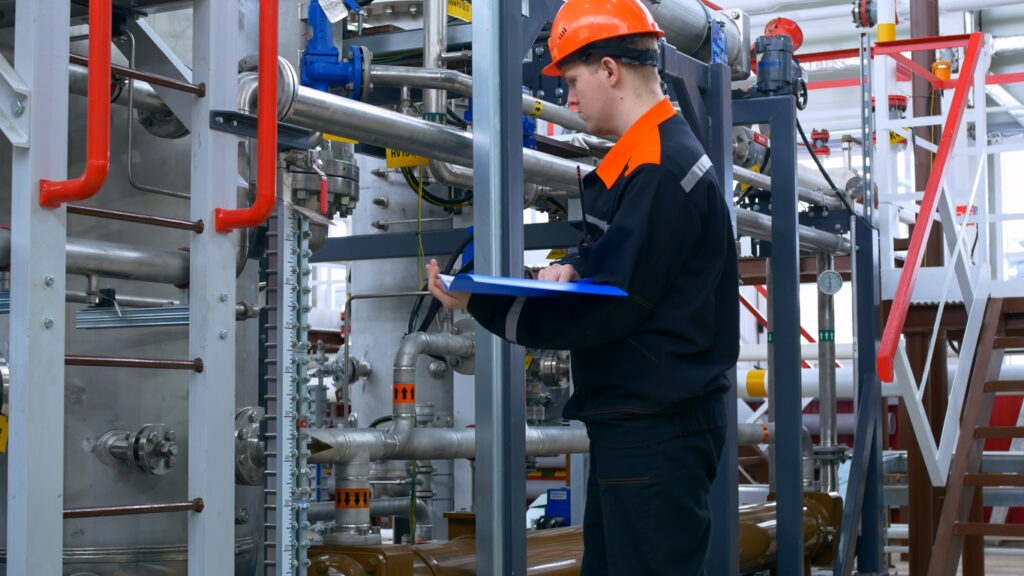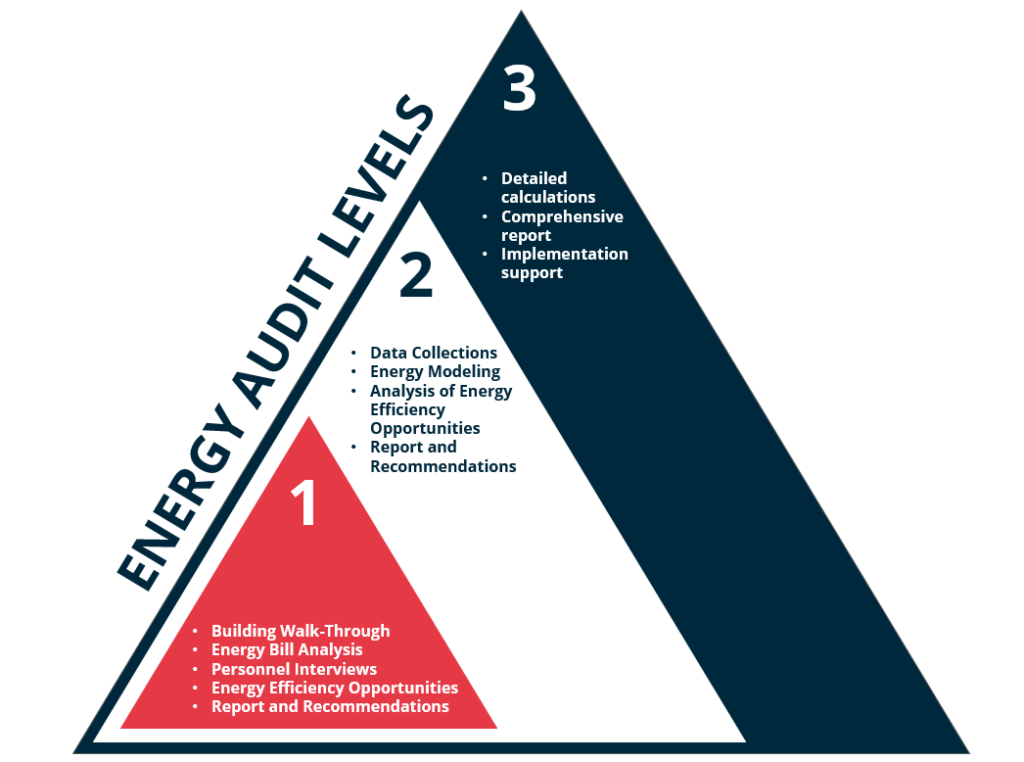Energy audits are an effective way of understanding the energy use of a commercial building. We began supporting large energy audits for offices and government buildings in 2012 and a lot has changed since then.
For decades, energy audits were defined by “best practices” which varied from auditor to auditor. Property owners and operators had to take a leap of faith when engaging companies to undertake energy audits on their behalf. The world of commercial energy audits was unregulated and when a commercial real estate owner signed the contract for an “energy audit” they could not be sure exactly what they would receive.
On April 5, 2018, the industry made a leap forward in solving this dilemma. On that day The American Society of Heating, Refrigerating and Air-Conditioning Engineers (ASHRAE), the Air Conditioning Contractors of America (ACCA), and the American National Standards Institute (ANSI) released their Standard for Commercial Energy Audits (ASHRAE 211-2018) defining what a true energy audit is.
The standard begins with the following acknowledgment: “The commercial energy audit industry is largely unregulated, and products that are labeled “energy audits” vary greatly in scope, rigor, and quality. This standard is intended to bring some order to the chaos by establishing minimum performance levels for energy audits.”
This post explains the benefits of energy audits and how the new standard cuts through the chaos and helps property owners and operators get the biggest value from their energy audit while reducing potential risks, and avoiding a few of the common complaints that property owners and operators have with the energy auditing process.
Property owners and operators can benefit from an ASHRAE 211 energy audit in several ways:

Cost Savings: An energy audit can identify areas of the building where energy is being wasted and recommend cost-effective measures to reduce energy consumption and lower utility bills. This can result in significant cost savings for the owner over time.

Increased Property Value: Energy-efficient buildings are in high demand, and an energy audit can help identify and implement measures that will make the building more attractive to potential tenants and buyers. This can lead to higher rental income and a higher sale price for the property.

Compliance with Regulations: Many states and municipalities have energy efficiency regulations that commercial buildings must comply with. An energy audit can help identify and implement measures that will bring the building into compliance with these regulations.

Improved Indoor Air Quality: An energy audit can also identify issues with indoor air quality, such as poor ventilation or mold growth, and recommend measures to address these issues. This can improve the health and comfort of the building’s occupants.

Increased Building Durability: An energy audit can identify and recommend measures to improve the durability of building systems and equipment, which can lead to lower maintenance costs and a longer lifespan for the building.

Carbon Footprint: An energy audit can help identify and implement measures that will reduce a building’s carbon footprint and contribute to a more sustainable future.
The ASHRAE Standard 211 defines three levels of energy audits, each with a different level of detail and comprehensiveness:
Level 1: Walk-Through Analysis:
This is the most basic level of energy audit. It involves a visual inspection of the building and its systems, and a quantitative assessment of energy conservation opportunities. This level of audit typically takes one or two days to complete, depending on the building size and complexity, and is used to identify simple and low-cost measures that can be implemented quickly.

The Level 1 audit typically includes the following steps:
- Building Walk-Through: The auditor will walk through the building and conduct a visual inspection of the building’s systems, such as lighting, heating, ventilation, and air-conditioning (HVAC), and identify any obvious energy conservation opportunities.
- Energy Bill Analysis: The auditor will review the building’s energy bills, including electricity, natural gas, and water bills, to identify any patterns or trends in energy usage.
- Interviews with Key Building Personnel: The auditor will interview the building’s personnel, such as the facilities manager or maintenance staff, to gather information about the building’s systems and any recent changes or upgrades that have been made.
- Identification of Energy Efficiency Opportunities: Based on the information gathered during the walk-through, energy bill analysis, and interviews, the auditor will identify energy conservation opportunities, such as lighting retrofits, HVAC upgrades, and building envelope improvements.
- Report and Recommendations: The auditor will prepare a report detailing the energy conservation opportunities that were identified during the audit, including cost estimates and potential savings.
It’s important to note that level 1 energy audit is focused on identifying simple and low-cost measures that can be implemented quickly and provide a basic Low/Medium/High qualitative assessment of the efficiency measures’ impacts. The level 1 audit serves as a starting point for identifying energy conservation opportunities, and as such, it is not as detailed and comprehensive as a level 2 or 3 energy audit.
Level 2: Energy Survey and Analysis:
This level of audit is more detailed and comprehensive than a level 1 audit. It involves collecting data on energy use and building systems and using that data to perform a more detailed analysis of the building’s energy performance. This level of audit typically takes one to two weeks to complete, depending on building size and complexity. The level 2 audit is used to identify both simple and complex energy conservation measures, as well as cost-benefit analysis of these measures.

The level 2 audit typically includes the following steps:
- Data Collection: The auditor will collect additional detailed data on the building’s systems, such as energy consumption, temperature, and humidity levels, using tools such as energy meters, temperature loggers, and occasionally even more technical devices as needed.
- Energy Modeling: The auditor will use the data collected to create an energy model of the building, which can be used to simulate the building’s energy performance under different conditions and identify potential energy conservation opportunities.
- Quantitative Analysis of Energy Efficiency Opportunities: Based on the information gathered during the walk-through, energy bill analysis, data collection, and energy modeling, the auditor will identify energy conservation opportunities, such as lighting retrofits, HVAC upgrades, building envelope improvements, and renewable energy systems.
- Report and Recommendations: The auditor will prepare a report detailing the energy conservation opportunities that were identified during the audit, including cost estimates and potential savings, as well as a detailed cost-benefit analysis for each recommended measure.
This level of audit is usually used to quantitatively assess measures that will have a significant impact on the energy consumption of the building, and these savings often require little or no capital expense like changes to lighting controls, HVAC set points, or changes in operator behavior.
Level 3: Detailed Analysis:
This is the most comprehensive level of energy audit. It involves a detailed analysis of all building systems, including a detailed analysis of energy use and the collection of detailed data on building systems and equipment. This level of audit typically takes several weeks to several months to complete and is used to identify all possible energy conservation measures, as well as to provide a detailed analysis of the cost-effectiveness of these measures.

During a Level 3 audit, an auditor will typically perform
- Detailed calculations to estimate the energy savings and cost-effectiveness of large, complex, potential upgrades.
- Develop a comprehensive report that includes recommendations for energy-efficient upgrades, an implementation plan, detailed cost estimates, and a risk assessment with mitigation strategies.
- Provide support for implementing the recommended upgrades, including commissioning, testing, and validation of the energy savings.
The auditor may also provide a detailed commissioning plan to ensure that the building’s systems are functioning correctly and that the energy savings are being realized after the upgrades have been completed.
The level 3 energy audit is typically used for large and complex buildings, such as hospitals, universities, and government buildings. It is also more expensive and time-consuming than the other levels of energy audit.

It’s important to note that all three levels of energy audits are based on a systematic, structured approach to identify and evaluate energy conservation measures, which contain the value of all prior levels. All three levels of audits are designed to provide building owners and managers with the information they need to make informed decisions about energy conservation measures.
We hope that this post has helped you understand the benefits of energy audits for property owners and operators as well as helped you understand which level is right for you.
Check out our downloadable energy audit flyer for more information on how we can support your facility as you explore your journey to going green.
Don’t let high energy costs eat into your bottom line. Contact us today to schedule an energy audit and start saving money on your energy bills!
